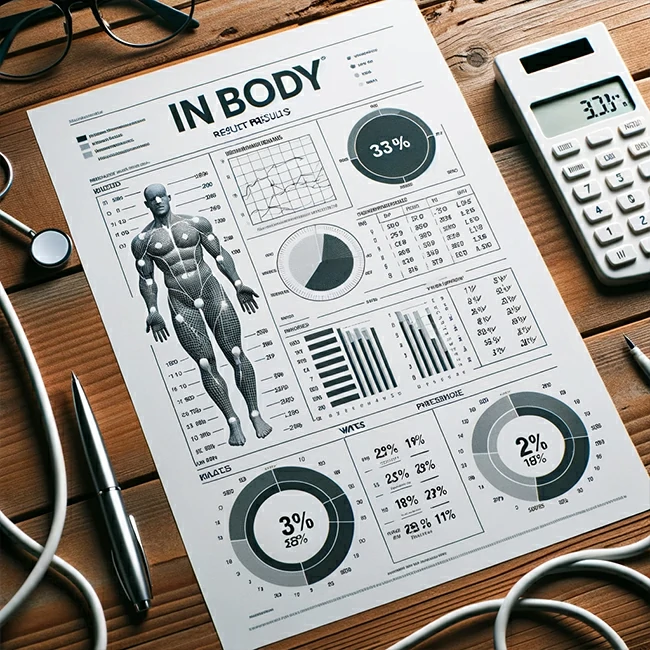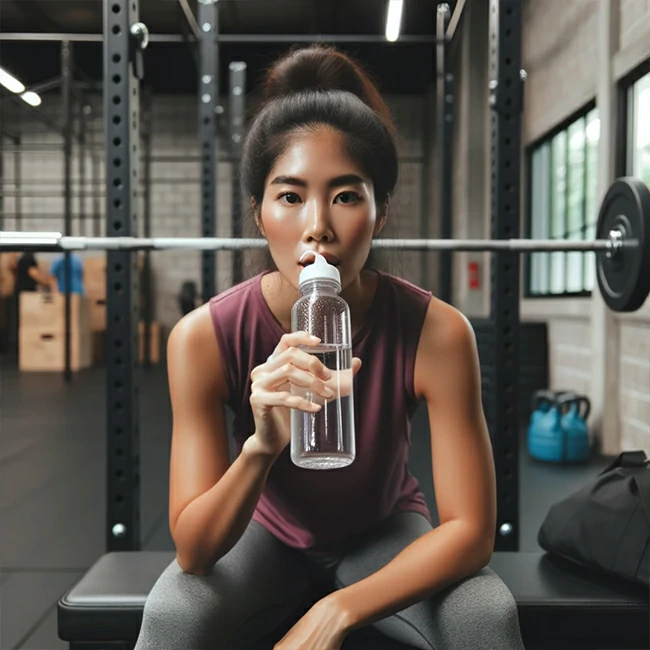The InBody Result Printout offers a detailed body composition analysis, encompassing metrics from Total Body Water to Basal Metabolic Rate. By understanding how to interpret these results, users can tailor their fitness and nutrition strategies for optimal health. Properly leveraging this data ensures a more informed and effective approach to one’s wellness journey.
Introduction to the InBody Result Printout
The InBody Result Printout represents a significant advancement in body composition analysis. Through this detailed report, users gain an in-depth understanding of various health metrics, ranging from muscle-fat ratios to segmental lean analysis. As health and fitness enthusiasts continually search for precise tools to guide their goals, the InBody Result Printout has emerged as an invaluable asset. Particularly for attendees of Summerlin group fitness classes, this comprehensive document offers a roadmap to better health, complementing their workout regimes.
With InBody’s innovation, the age-old reliance on mere weight scales is evolving into a more nuanced appreciation of body health. To learn where you can access this technology, read our article, Where to Find an Inbody Scale To Measure Your Body Fat In Summerlin.
The Purpose And Significance Of The InBody Result Printout
Understanding body composition is essential for anyone invested in their health and well-being. The InBody Result Printout is a comprehensive tool that goes beyond the surface to give individuals a precise overview of their physical state. This printout isn’t merely a compilation of numbers but a reflection of one’s dedication to health, indicating strengths, areas for improvement, and benchmarks for future goals.
Each metric, whether Total Body Water, Body Fat Mass, or Basal Metabolic Rate, has been meticulously designed to clarify different facets of one’s health. For instance, knowing one’s Body Fat Mass can inform weight management strategies, while understanding Basal Metabolic Rate can guide nutritional plans. As a result, individuals are empowered to make more informed decisions about their health regimens. This level of detail, particularly in settings such as Summerlin group fitness classes, allows for personalized fitness and nutrition plans that cater to individual needs and goals, ultimately leading to more sustainable and effective results.
How The Printout Complements Your Fitness Journey
The advantage of the InBody printout goes beyond its comprehensive metrics; it’s about how these insights can be utilized. For example, participants in Summerlin group fitness classes can use this data to tailor their workouts and nutrition. Are you building muscle at the rate you want? Is your body fat percentage moving in the desired direction? The printout answers these questions, ensuring that individuals aren’t just working hard but also working smart.
The Evolution Of Body Composition Analysis With InBody
Traditional scales were the primary tools in fitness assessments for years, focusing solely on weight. While this metric is useful, it often misses the nuances of an individual’s overall health and wellness. With the advent of InBody, the fitness industry saw a significant shift in how health assessments were approached.
InBody introduced a comprehensive method to measure different aspects of body composition, distinguishing between muscle, fat, and water. This layered approach provides deeper insights, revealing more about one’s health than weight alone ever could. This level of detail has become essential for communities like Summerlin, where fitness is a priority. With this knowledge, individuals can craft fitness plans tailored to their unique needs, promoting more effective and targeted health improvements.
Understanding Core Components: Total Body Water, Dry Lean Mass, and Body Fat Mass
When it comes to health and fitness, simply knowing our weight isn’t enough. Three critical components – Total Body Water (TBW), Dry Lean Mass (DLM), and Body Fat Mass (BFM) – provide in-depth insights into our physical health. Let’s explore each of these components, their importance, and how they interrelate.
Total Body Water (TBW):
- Science Behind Measuring TBW: TBW represents the total amount of water present in the human body. It’s typically measured using bioelectrical impedance analysis (BIA), which evaluates the resistance of body tissues to the flow of an electrical current. Since water is a good conductor, lower resistance indicates higher body water content.
- Role in Health & Fitness: TBW is essential for various physiological processes, including digestion, absorption, circulation, and maintenance of body temperature. Adequate hydration supports optimal muscle function, cognitive clarity, and metabolic processes.
- Correlation with Other Components: A decrease in TBW might not always signify dehydration; it could also indicate a reduction in lean mass. Moreover, an imbalance between TBW and BFM can suggest changes in body composition rather than mere weight fluctuations.
Dry Lean Mass (DLM):
- Science Behind Measuring DLM: DLM comprises the weight of the body’s internal structures, excluding body fat and bodily fluids. It’s calculated by subtracting TBW and BFM from total body weight.
- Role in Health & Fitness: DLM primarily represents muscle mass, but also includes bone, skin, hair, and internal organs. A higher DLM often signifies increased strength, metabolic rate, and physical stamina. It’s crucial for mobility, balance, and overall physical well-being.
- Correlation with Other Components: As DLM increases (usually through muscle gain), TBW might also rise since muscles contain significant water. Conversely, a decline in DLM can result from muscle loss, potentially reducing TBW.
Body Fat Mass (BFM):
- Science Behind Measuring BFM: BFM represents the total mass of all fat in the body. Techniques like dual-energy X-ray absorptiometry (DEXA) and BIA are commonly used to assess BFM, providing insights into both subcutaneous and visceral fat.
- Role in Health & Fitness: While some body fat is essential for protecting organs and storing energy, excessive BFM can increase the risk of chronic conditions like heart disease and type 2 diabetes. Managing BFM is vital for overall health, longevity, and athletic performance.
- Correlation with Other Components: BFM and DLM usually move in opposite directions. As one increases muscle mass (DLM), the proportion of BFM often decreases, and vice versa. However, TBW might stay consistent, as both muscles and fat contain water, albeit in different proportions.
Analyzing TBW, DLM, and BFM offers a comprehensive view of one’s health and fitness. Recognizing their interdependencies and fluctuations can guide targeted interventions, personalized training regimes, and dietary adjustments for optimal well-being.
Muscle-Fat Analysis: What It Tells You
Body composition is a foundational aspect of health and fitness. While weight is a commonly discussed metric, understanding the distribution of muscle and fat is paramount. Muscle-fat analysis offers a comprehensive look into this distribution, revealing more than just numbers on a scale. It provides insights into physical health, metabolic rate, and potential risks associated with disproportionate muscle-fat ratios.
Differentiating Between Muscle Mass and Fat Mass
Muscle mass refers to the weight of muscles in the body, encompassing skeletal muscles, smooth muscles, and the water contained within these muscles. It plays a pivotal role in metabolic rate, strength, and physical stamina. In contrast, fat mass represents the total amount of fat stored in the body, including both essential fats (necessary for physiological functions) and stored fat (excess calories stored for energy).
The Importance of a Balanced Muscle-Fat Ratio
A balanced muscle-fat ratio is crucial for overall health and well-being. A higher proportion of muscle mass increases the body’s metabolic rate, leading to efficient calorie burning, even at rest. Conversely, an elevated fat mass, especially visceral fat stored around vital organs, is associated with an increased risk of chronic diseases such as cardiovascular disease and type 2 diabetes. Therefore, maintaining a proportionate muscle-fat ratio not only enhances physical performance but also reduces the risk of health complications.
How to Interpret Your Results in the Context of Fitness Goals
Understanding your muscle-fat analysis results is essential for aligning with your fitness objectives. Here’s a breakdown of how to interpret these results based on specific goals:
| Fitness Goals | Interpretation & Action |
|---|---|
| Weight Loss Goals | Focus on reducing fat mass while preserving or increasing muscle mass. This ensures weight loss is primarily from fat reduction, not muscle loss. |
| Muscle Building Goals | Monitor muscle mass increases, ensuring fat isn’t accumulating disproportionately. While caloric intake often needs to rise for muscle growth, prioritize nutrient-dense calories to avoid excessive fat gain. |
| Maintenance Goals | Consistently track both muscle and fat mass to maintain your physique. Any notable fluctuations can hint at changes in diet, activity, or health. |
By aligning your actions with your fitness goals, you can optimize the benefits of your muscle-fat analysis and make informed decisions for your health journey.
Tackling Obesity: Interpreting the Obesity Analysis
Tackling obesity demands a thorough understanding of the specific metrics typically employed in an obesity analysis section. Common metrics include Body Mass Index (BMI), which evaluates an individual’s weight relative to their height, waist circumference, which can indicate visceral fat levels, and body fat percentage, offering insights into the overall proportion of body weight attributable to fat. Each of these metrics, individually and collectively, plays a pivotal role in determining an individual’s health profile.
The results of the obesity analysis are not just indicators of one’s physical appearance; they provide a deeper insight into underlying health risks. High values in these metrics often correlate with heightened susceptibility to a range of chronic diseases. Conditions such as heart disease, type 2 diabetes, and certain types of cancers can be more prevalent in individuals with elevated obesity metrics. Beyond chronic ailments, excessive weight and fat can lead to issues like joint pain, sleep apnea, and even psychological challenges like depression or anxiety.
Strategies To Address Findings From This Section
Recognizing the risks is the first step. The next, and arguably more crucial step, is action. Strategies to address findings from the obesity analysis are diverse. Dietary modifications are often at the forefront; this doesn’t just mean eating less but eating right. A diet rich in whole foods, and low in processed sugars and unhealthy fats can make a significant difference. Physical activity is another pillar. Regular exercise, be it cardio, strength training, or flexibility exercises, can immensely help manage and reduce obesity metrics. Beyond diet and exercise, behavioral interventions, including therapy, group support, and sometimes even medication, can be instrumental. Every individual’s journey is unique, and the solutions should be tailored to their specific findings and circumstances.
Diving into Segmental Lean Analysis
One of the standout features of the InBody Result Printout is the Segmental Lean Analysis. This metric provides a broad overview of an individual’s body composition and dives into the specifics by segmenting the body into different parts and providing lean measurements for each.
Breakdown of Segmental Lean Measurements for Different Body Parts
Segmental Lean Analysis offers detailed insights into the lean mass distribution across various body parts, including the arms, legs, and trunk. By quantifying the lean mass in each segment, individuals can better understand which parts of their body are more muscular and which may need more attention.
The Importance of Segmental Lean Balance
Maintaining a balanced segmental lean distribution is vital for overall body functionality and posture. An imbalance in lean mass can lead to postural problems, decreased functional ability, and a higher risk of injuries. For instance, having one leg with significantly more lean mass than the other could lead to imbalances when walking or running, potentially causing strain on the joints.
Addressing Imbalances Through Targeted Exercises
Recognizing these imbalances is the first step toward addressing them. By understanding which body segments need strengthening, individuals can integrate targeted exercises into their fitness routine to promote balance. For example, if the Segmental Lean Analysis shows a lack of lean mass in the arms compared to the legs, one might prioritize arm-strengthening exercises. Participants in Summerlin group fitness classes can also seek advice from their trainers to develop customized workout routines that address these specific imbalances, ensuring a well-rounded and balanced fitness journey.
Tracing Changes: Reading the Body Composition History
Tracking body composition changes offers a comprehensive perspective on one’s fitness evolution. The InBody Result Printout provides more than just current metrics; it chronicles your body’s transformation over time. This longitudinal data is essential for evaluating progress, setting tangible goals, and refining health strategies.
The Significance of Tracking Changes Over Time
Recording changes in body composition gives individuals concrete evidence of the results of their fitness routines and dietary choices. For instance, consistent increases in muscle mass paired with body fat reductions indicate a successful approach. However, stagnant metrics or those trending undesirably signal a need for adjustments.
Understanding Trends and Patterns in Your Body Composition
By observing body composition data over longer periods, discernible patterns become evident. These patterns can highlight the effects of lifestyle choices, such as adopting a new workout regimen or diet adjustments. For those attending Summerlin group fitness classes, this can also illustrate the impact of different class routines on their physical progress.
How to Use Past Data to Inform Future Fitness Strategies
One can shape their future fitness strategies more effectively with insights from historical trends. For example, maintaining or amplifying that regimen may be beneficial if lean mass growth aligns with specific workout changes. Conversely, necessary modifications become clear if body fat percentage rises during inactivity or diet changes. Using past data as a reference ensures a targeted and purposeful fitness journey.
Balancing Act: Body Fat-Lean Body Mass Control Explained
Understanding the balance between body fat and lean body mass is essential for health and performance. The InBody Result Printout offers a clear guide to achieving this balance. Its detailed insights make it an invaluable asset for fitness enthusiasts, especially those attending Summerlin group fitness classes.
The Relationship Between Body Fat and Lean Body Mass
Body fat and lean body mass are two primary components of one’s body composition. While body fat refers to the fat content in your body, lean body mass encompasses everything else, including muscles, bones, organs, and water. A balanced proportion between these components ensures good health, muscular strength, and optimal metabolic rates.
Setting Targets for Optimal Health and Performance
The ideal balance between body fat and lean body mass varies based on age, gender, and fitness goals. For athletes, a higher lean body mass and lower body fat percentage may be desirable for peak performance. Conversely, non-athletes might prioritize a balance with overall health and functional fitness. Regular consultations with fitness professionals, especially with insights from the InBody printout, can help set realistic and beneficial targets.
Adjusting Lifestyle Factors Based on This Section’s Feedback
Based on the feedback from the body fat-lean body mass control section of the InBody printout, individuals can make informed decisions about their lifestyle. For example, a higher than-desired body fat percentage might prompt dietary changes or increase cardiovascular exercises. Similarly, if one wishes to enhance their lean body mass, resistance training, and protein-rich diets might be recommended. The key is to use this data as a feedback loop, continually refining strategies to inch closer to the desired body composition.
Basal Metabolic Rate (BMR): Why It Matters
Basal Metabolic Rate (BMR) plays a pivotal role in our body’s energy management and is a critical metric for anyone focused on health and fitness. It represents the amount of energy, in calories, that your body needs to perform basic life-sustaining functions while at rest – such as breathing, circulating blood, and cell production. Understanding your BMR is fundamental in managing your diet and fitness regime. It helps in determining the right amount of calorie intake needed to maintain, lose, or gain weight, tailored to your body’s specific energy requirements.
I did some research and found out that various factors influence BMR, including age, sex, weight, height, and overall body composition. For instance, muscle tissue burns more calories at rest compared to fat tissue. Therefore, people with more muscle mass generally have a higher BMR. This fact highlights the importance of incorporating strength training into fitness routines, particularly for those attending Summerlin group fitness classes. By increasing muscle mass through activities like strength training, you can effectively raise your BMR. This, in turn, can lead to more efficient calorie burning, both at rest and during workouts.
Incorporating these insights into your fitness and nutrition planning can lead to more informed decisions about your health. Understanding your BMR is not just about the numbers on the scale; it’s about comprehending how your body functions and using that knowledge to achieve your fitness goals. For participants of group fitness classes, recognizing the impact of different exercises on BMR can be a game-changer in their fitness journey.
Making Sense of Impedance Values
Impedance plays a pivotal role in the InBody system’s methodology. Bioelectrical Impedance Analysis (BIA), the principle on which the InBody operates, utilizes the resistance or impedance of body tissues to a small electrical signal to estimate body composition. Essentially, fat, water, and muscle in the body have distinct electrical characteristics, and by measuring impedance, the device can differentiate between these components.
However, certain factors can introduce variations in impedance readings. For instance, the level of hydration in the body can affect the impedance value. A dehydrated individual might have a higher impedance compared to when fully hydrated. Other factors like the application site, recent physical activity, and even the room’s temperature can play a role in influencing impedance values.
To ensure the most accurate readings, it’s essential to standardize the conditions during each measurement. This means maintaining consistent hydration levels, taking measurements at similar times of day, and ensuring the device is used in a stable environment. For fitness enthusiasts, particularly those attending Summerlin group fitness classes, understanding and accounting for these variables can help in getting consistent and meaningful insights from their InBody assessments.
Utilizing the InBody Printout in Fitness Planning
The InBody Result Printout provides a detailed picture of one’s current physical condition. By aligning the results from the printout with fitness objectives, individuals can set clearer and more precise goals. Working with expert trainers, especially for those in Summerlin group fitness classes, can help in understanding these numbers more intimately.
Furthermore, with the detailed metrics from the printout, it’s possible to customize workouts and diets for enhanced results. The data serves as a roadmap, guiding fitness enthusiasts on necessary adjustments to ensure they’re on the right path, optimizing their efforts for the best outcomes.
For just $29.99, not only will you receive a complimentary group fitness class, but you’ll also benefit from a free consultation to expertly interpret your data. Don’t just measure – understand and optimize with us!
Unlock the full potential of your InBody results with Osi Body Fit in Summerlin!












